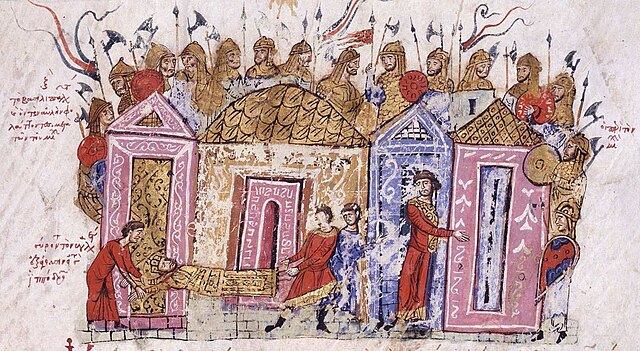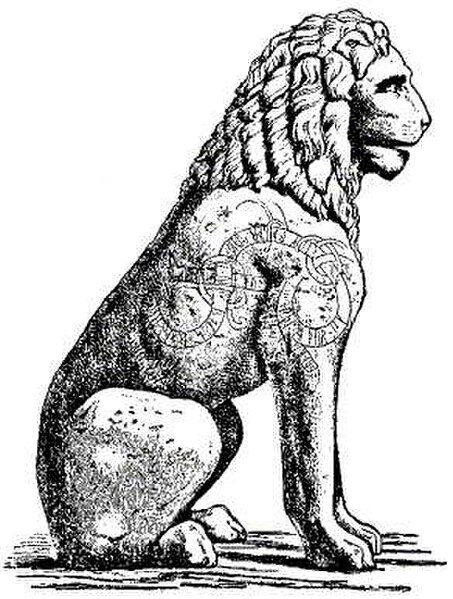Harald Sigurdsson, also known as Harald III of Norway and given the epithet Hardrada in the sagas, was King of Norway from 1046 to 1066. Additionally, he unsuccessfully claimed both the Danish throne until 1064 and the English throne in 1066. Before becoming king, Harald had spent around fifteen years in exile as a mercenary and military commander in Kievan Rus' and as a chief of the Varangian Guard in the Byzantine Empire. In his chronicle, Adam of Bremen called him the "Thunderbolt of the North".
Near-contemporary depiction of Byzantine Varangian Guardsmen, in an illumination from the Skylitzes Synopsis.
Harald's wife Elisiv of Kiev, daughter of Yaroslav the Wise
The present Klostergata in Trondheim, site of the former Helgeseter Priory
Oslo City Hall (centre of image) with relief depicting Harald on the western façade
The Varangian Guard was an elite unit of the Byzantine Army from the tenth to the fourteenth century who served as personal bodyguards to the Byzantine emperors. The Varangian Guard was known for being primarily composed of recruits from northern Europe, including mainly Norsemen from Scandinavia but also Anglo-Saxons from England. The recruitment of distant foreigners from outside Byzantium to serve as the emperor's personal guard was pursued as a deliberate policy, as they lacked local political loyalties and could be counted upon to suppress revolts by disloyal Byzantine factions.
Depiction of the Varangian Guard (above) in the 11th century chronicle of John Skylitzes
An illumination of a scene from the Skylitzes Chronicle, depicting a Thracesian woman killing a Varangian who tried to rape her, whereupon his comrades praised her and gave her his possessions
Seal of Michael, Grand Interpreter (megas diermeneutes) of the Guard
Piraeus Lion drawing of curved lindworm. The runes on the lion tell of Swedish warriors, likely Varangians, mercenaries in the service of the Byzantine (Eastern Roman) Emperor.







